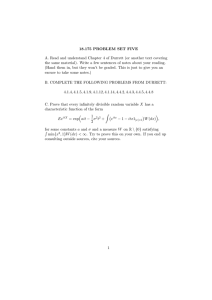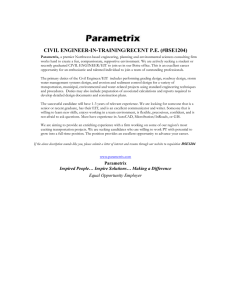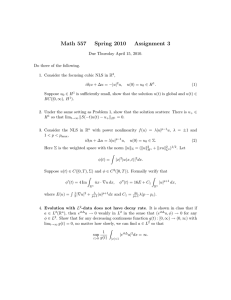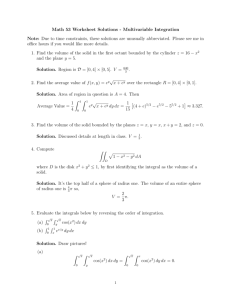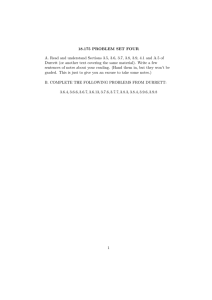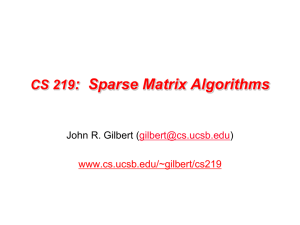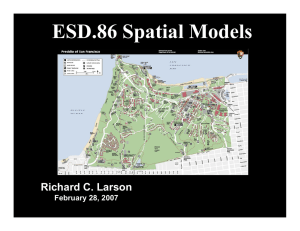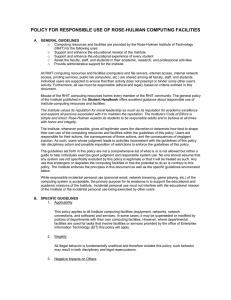Probability Qualifying Exam Solution, Spring 2011 Shiu-Tang Li December 1, 2012
advertisement
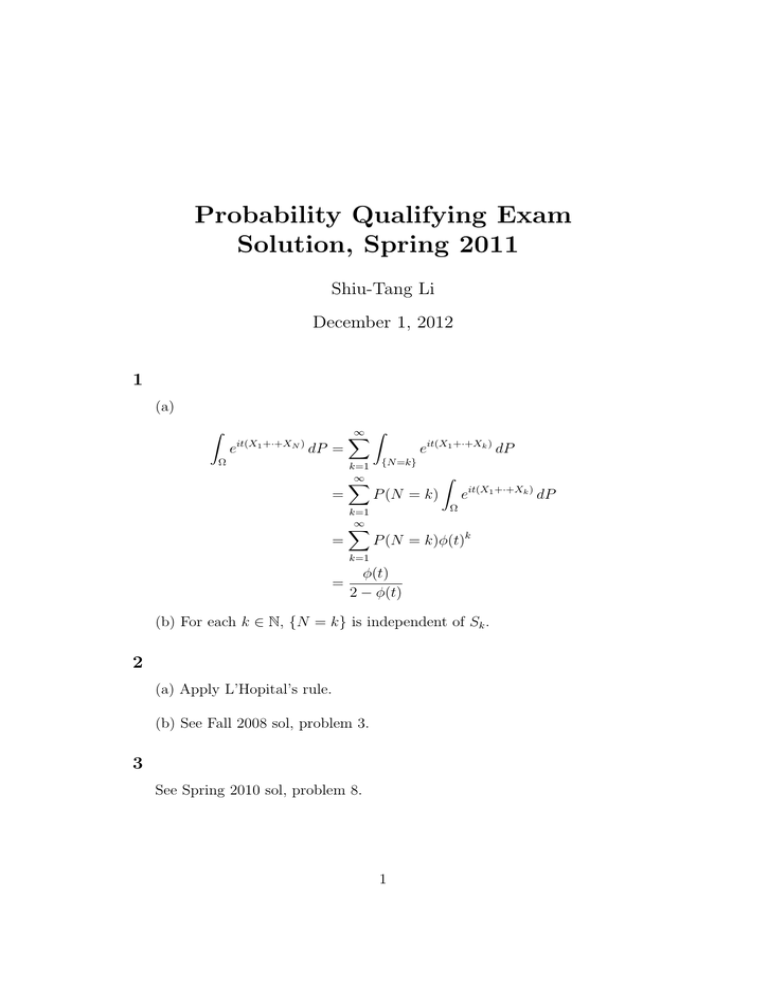
Probability Qualifying Exam
Solution, Spring 2011
Shiu-Tang Li
December 1, 2012
1
(a)
Z
e
it(X1 +·+XN )
dP =
Ω
=
=
∞ Z
X
k=1
∞
X
k=1
∞
X
eit(X1 +·+Xk ) dP
{N =k}
Z
P (N = k)
eit(X1 +·+Xk ) dP
Ω
P (N = k)φ(t)k
k=1
=
φ(t)
2 − φ(t)
(b) For each k ∈ N, {N = k} is independent of Sk .
2
(a) Apply L’Hopital’s rule.
(b) See Fall 2008 sol, problem 3.
3
See Spring 2010 sol, problem 8.
1
4
Let X1 , X2 , · · · be a sequence of i.i.d random variables with density g(x) =
e 1{x>0} . Since E|X1 | < ∞, Strong law of large numbers tell us Snn →
E[X1 ] = 1. Since a.s. convergence implies convergence in distribution, we
have E[f (Sn /n)] → E[f (1)] = f (1) for every bounded continuous function.
f (1) is the answer.
−x
5
6
R
(a) If X is symmetric,
thenR φX (t) = φ−X (t), then Ω i sin tX dP = 0 and
R itX
hence φX (t) = Ω e dP = Ω cos(tX) dP is real. Conversely, if φX (t) is
real, we have φX (t) = φ−X (t). It follows that X and −X has the same distribution function and hence X is symmetric.
(b)1. Point mass at 0: φ(t) ≡ 1.
2. Uniform distribution on (−a, a):
R
Ra
1 a
eitx dx = 21 −a cos(tx) dx = sin(at)
.
2 −a
at
3. N (0, 1) :
Z
Z
(x−it)2
t2
1 − x2 itx
1
−
√ e 2 e dx = e 2
√ e− 2 dx
2π
2π
R
R
t2
= e− 2 . Use contour integral to approximate it.
7
If E[X|G ]1G 6= E[Y |G ]1G , then WLOG assume P (E[X|G ]1G > E[Y |G ]1G ) >
0 ⇒ P (E[X|G ]1G > p > q > E[Y |G ]1G ) > 0 for some p, q ∈ Q. Let
A = {E[X|G ]1G > p > q > E[Y |G ]1G }. Of course A ∈ G and A ⊂ G.
However, by the assumption of the problem we have
Z
Z
E[X|G ] dP =
X dP
A
A
Z
=
Y dP
ZA
=
E[Y |G ] dP
A
which is a contradiction.
2
8
See also Durrett. E[ρZn |Fn−1 ] = E[ρξ1 +···+ξZn−1 |Fn−1 ]. To compute this,
note that
Z
Z
ξ1 +···+ξZn−1
ρ
dP =
ρξ1 +···+ξk dP
Zn−1 =k
Zn−1 =k
= P (Zn−1 = k)E[ρξ ]k
Z
k
= P (Zn−1 = k)ρ =
ρZn−1 .
Zn−1 =k
9
E[X 2 ]1/2 E[(1X>a )2 ]1/2 = E[X 2 ]P (X > a) ≥ E[X; X > a] = E[X] −
E[X; X ≤ a] ≥ E[X] − a.
10
2
n
e−n (1 + n + n2! + · · · + nn! ) = P (Xn ≤ n), where Xn is a Poisson r.v. with
parameter n. Let Y1 , Y2 , · · · be a sequence of i.i.d Poisson random variables
d
of parameter 1, we have Y1 + · · · + Yn = Xn . By central limit theorem,
√ n −n ≤ 0) = P (Xn ≤ n) → 1 as n → ∞.
P ( Y1 +···+Y
2
n
3
